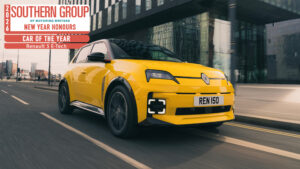BACK in 2012 Isuzu launched the D-Max to replace the Rodeo, and over the intervening years it has become a firm favourite with farmers and tradespeople alike for its hardworking credentials, known for being tough and reliable.
It is a pick-up that just gets on with the job without fuss day in day out and can cope with any task asked of it and has over the years won countless awards as one of the best workhorse pick-ups on the market.
2024 Kia driving day: Why the SGMW is miles better!
The range is pretty extensive to suit all tastes, with Business, All-Purpose and Adventure, with the staircase of trim levels as Utility, DL20 and D40 and the range-topping V-Cross. Two wheel and four-wheel-drive are both available as is the choice of single or double cab.
I was able to enjoy for a week the V-Cross Steel Edition, which is limited to 300 in number and for the automatic transmission model comes in with a price tag of £39,995 and £38,495 for the manual model. This price is before VAT is added, but business users can claw back the dreaded tax.
Climbing aboard the double cab D-Max, things have certainly changed over the years in terms of refinement of this sort of utility vehicle, as the interior is very car like. It has been some years since I have driven a pick-up and the new D-Max is certainly a lot less bouncy in its suspension behaviour and handling from previous pick-ups I have sampled. Steering lock is impressive too.


Power comes from a 1.9-litre diesel engine (the only option) and this Euro 6 compliant power plant pushes out a healthy 164PS and a punchy amount of torque at 360Nm. It is a tad vocal at slower speeds, but once up to motorway cruising speed is hardly noticeable.
I did not have the chance to experience it off-road and try the different 4WD settings, and to be honest it was too new to get really dirty and on a long run of mixed motorway and A-road driving it returned a respectable 35.3mpg.
It did get pressed into service later in the week as my wife and I have been searching antique establishments for an outdoor garden bench for potting and sowing purposes and found one which fitted the bill.
The flatbed of the D-Max is 5ft (152cm) in length and bench was 6ft (182cm) but lowering the tailgate added that extra foot and it fitted easily and was secured down for the journey home.
To list all of the features and standard equipment on the Steel Edition on test would take several pages and shows just how much the D-Max has raised its game with the level of kit and creature comforts they now carry. Only item missing for me was satellite navigation on the 9in touchscreen, but with most mobile phones having mapping facilities the addition of Apple CarPlay/Android Auto takes care of that.
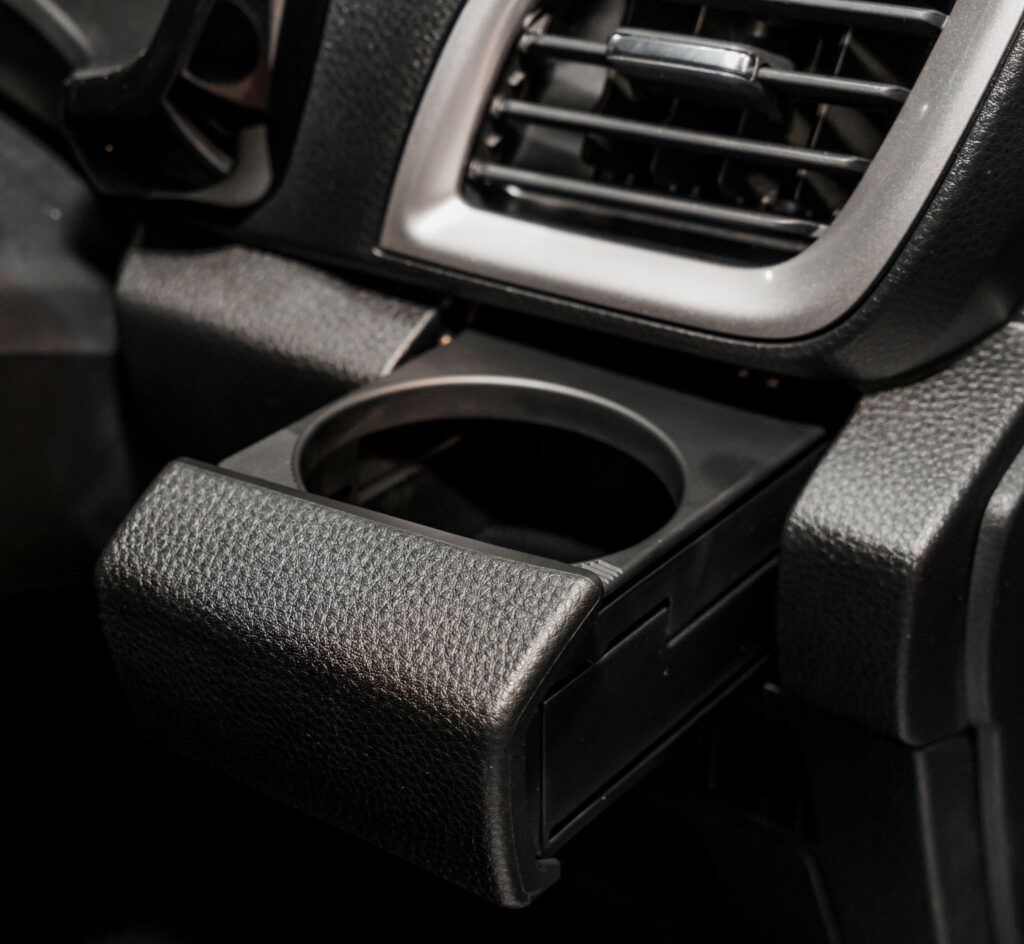
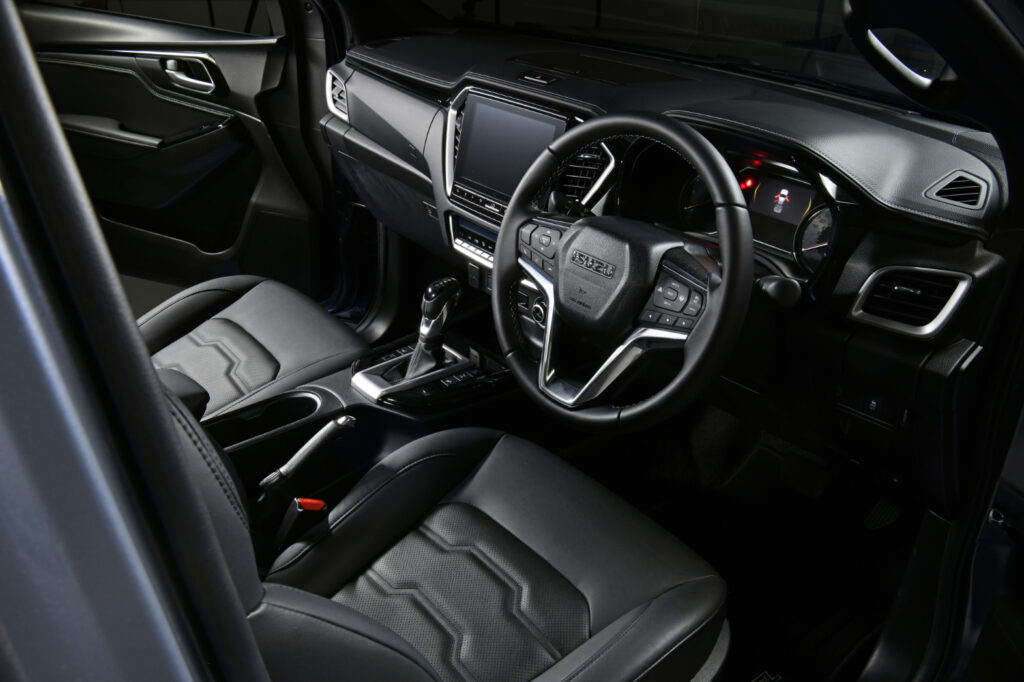
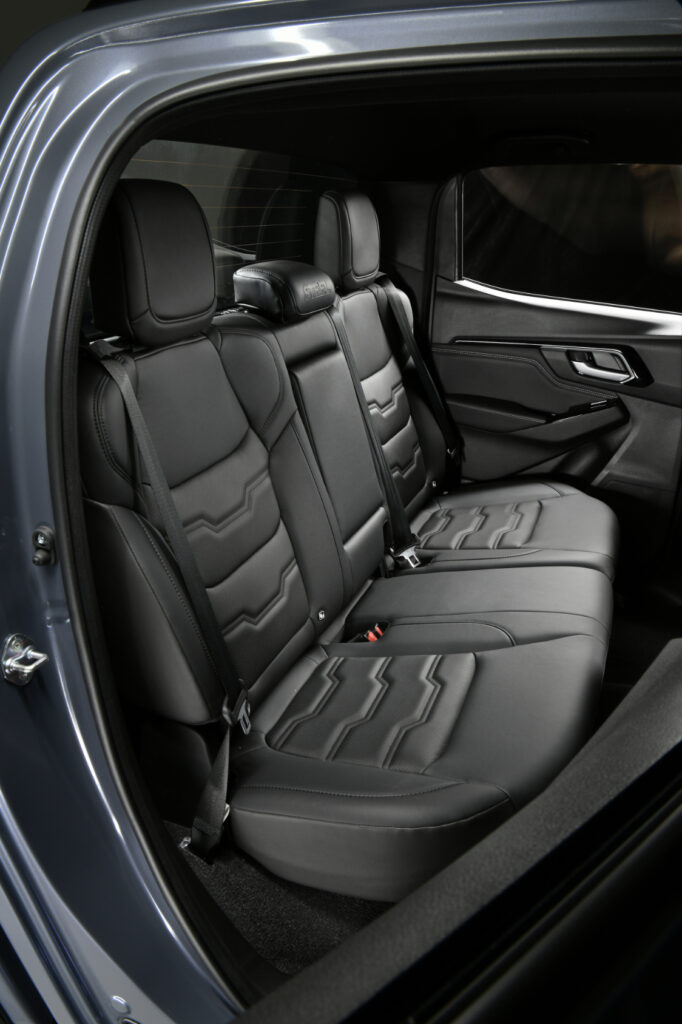
An indication to me of the level of equipment was the veritable mass display of coloured symbols from the dashboard when you hit the ignition button. It reminded me of multi-coloured Christmas tree lights.
Two small items that I did notice though were the Steel Edition monikers in the door treads and projecting on the ground from the door mirrors and the cup holder just to the right of the steering wheel. Well, even farmers and tradespeople can’t survive without their morning beverage.
Accessories that were fitted included the Alpha cargo cover, a rigid loadspace cover with gas strut assist, Sportguard cargo liner with bed lights and Brink tow bar.
Lastly, but not least, was a pair of Lazer lights to assist the main beam lighting, which were so incredibly powerful I expect they could make it to the Moon and back.
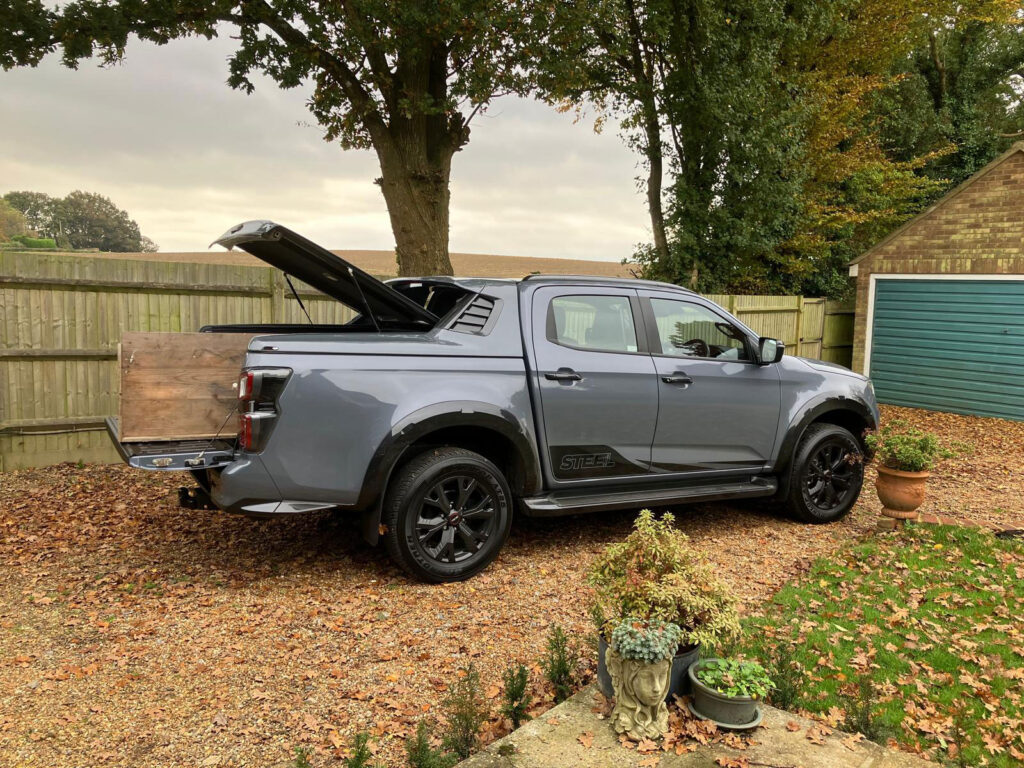
Where the D-Max does show its workhorse pedigree is in its capability of an over one tonne payload, 3.5 tonne towing capacity and all 4×4 models are equipped with trailer sway control.
Add to this 125,000 mile five year warranty, 5 year UK/EU roadside assistance and 12 year corrosion warranty all add to the Isuzu D-Max putting up a very strong showing.

